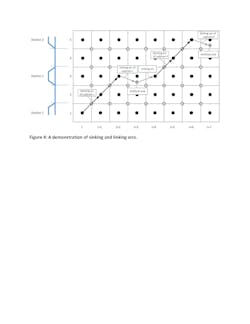As the weeks wind down on 2015, the U.S. economy continues to rebound from the recessionary forces of a few years ago. One indicator of better economic conditions across all corners of the United States: The steady growth in rail transportation.
This holds true for both intercity passenger rail, where revenues and ridership have increased markedly over the past decade, and freight railroad traffic volume, which continues to increase to meet shipper and market demands.
The statistics tell the story:
- In the fiscal year that ended Sept. 30, 2014, Amtrak announced record ticket revenues of $2.189 billion and ridership of more than 30.9 million passengers, slightly ahead of the previous fiscal year. According to Amtrak, between 2000 and 2013 ridership has increased nationwide by more than 50 percent. Each day, an estimated 86,000 passengers are served on 300 Amtrak trains.
- From the freight perspective, US DOT Bureau of Transportation Statistics data shows a steady increase in monthly rail carloads from the start of the economic recovery in 2010 to today. For example, the seasonally adjusted carloads figure for May of 2015 was 1,220,229, around a 6 percent increase over the May 2104 total of 1,147,459.
These developments, while good for the nation and economy, have challenged capacity limits along rail corridors, especially those carrying both people on business and pleasure travel and freight traffic that delivers completed and raw materials.
On most routes, Amtrak trains run on fixed schedules and in theory have access priority in the United States; that’s not the case, however, with most freight train runs, which are not on stringent timetables. What’s more, the number of cars on a freight run is often factored on the economy of scale: The longer the train, the lower the overall costs to the railroad and shippers.
Now, add a new factor — the option of high speed passenger rail service — to the shared corridor equation and greater issues involving capacity begin to surface. Clearly, the railroad industry, passengers and freight railroads could benefit from new insight on how to better manage traffic and reduce delays during these booming times for rail transportation in the United States.
Research Leads to New Planning Tool
To gain a strategic perspective on the impact of a shared use passenger and freight rail corridors, a research study was undertaken to better understand challenges, identify some potential solutions and provide key stakeholders — freight railroads, Amtrak schedulers and federal and state policymakers — with a new resource. The report, “Integrated Modeling of High Performance Passenger and Freight Train Operation Planning on Shared Use Rail Corridors: A Focus on the US Context,” was completed in late 2014 and funded by the Illinois Department of Transportation and the Center for Urban Transportation Research.
This statement from the report sums up the purpose behind the project: “Given the economic appeal of high performance passenger rail on shared-use corridors and the fact that such services have not been put in place in the U.S., it is important to understand, from the strategic planning perspective, the interactions between passenger and freight services.”
The research team explored different solutions and concluded that the most effective next step was to build a model that could be applied to a sample problem and a real-world shared use corridor in the U.S. The key product of the report, commissioned by the Urban Transportation Center at the University of Illinois at Chicago, was a two-level, hypergraph-based, strategic level planning model for single-track train operations.
For those unfamiliar with this type of planning model, here’s how it works: A hypergraph is a generalized graph representation tool that allows an edge (or arc) to connect multiple nodes on the graph. One advantage of using hypergraph is its ability to capture potential train path conflicts while trains transition between two neighboring blocks. The first level of the hypergraph-based model intended to minimize passenger side cost which depends on train frequency and schedules; the second level made a determination for delays to freight train runs.
Other transportation researchers have employed models to address scheduling and capacity, but this study differs from previous research in these three ways: The research team incorporated the preferred times when passengers wanted to begin their journey and factored in the value of time lost and inconvenience due to interruption and delay; we sampled real-world problems on a very busy rail corridor within the U.S.; and we factored in a comprehensive set of cost components involved in passenger and freight train operations.
Study Focus: Chicago-to-St. Louis
The specific route studied was the nearly 300-mile shared corridor between Chicago and St. Louis, which currently is under renovation to accommodate 110-mile-per-hour passenger service. Used by Amtrak and many freight railroads, the corridor upgrade work began in 2012 is scheduled to be completed in 2017. It marks the first time a high-speed route is being developed on a shared corridor in the U.S. Once operational, the new high-speed line would reduce the travel time for passenger service by around 60 minutes, or to around four hours.
This is good news for the people who opt to travel using Amtrak on the popular scheduled Chicago-to-St. Louis route. But what would be the impact on shipments from freight railroads, which for the most part own and maintain most of the tracks? And, remember that freight train timetables are often inconsistent, with some runs scheduled only the day before. Would the track upgrades result in serious delays on the more structured passenger runs, negating the benefits of operating trains at a 110-mile-per-hour threshold? Finally, given the steadily increasing popularity of passenger rail travel, what happens if Amtrak decides to add more trains on the route?
The answers to these and other questions related to managing capacity can be obtained through various structural and operational improvements determined in part by employing our hypergraph planning model. For example, railroads could build additional rail sidings adjacent to the main line or through route and install upgraded signaling to increase capacity for freight traffic on the route. Operational changes, like allowing freight trains to run at higher speeds, also could help ease congestion and minimize delays.
The big determinant to these types of projects is money. The rail industry would have to project whether rail traffic would continue to increase in the decades to come and determine whether it would be cost-effective to fund these types of improvements.
Some Key Research Findings
Our report and two-level model offer the industry a tremendous amount of knowledge and a new tool to better manage shared rail corridors in the years to come. Here are three conclusions that planners should be aware of today:
- Operating more passenger trains on a shared corridor lowers instances of passenger schedule delay, and in turn, generalized travel costs to passengers; however, the outcome may be higher costs for freight rail carriers.
- In most cases studied, the marginal cost increases to freight railroads would be higher than the associated marginal passenger schedule delay cost reduction. This is especially true when frequent passenger train services already exist.
- Allowing for a greater tolerance of poorer on-time performance of freight trains reduces foregone demand, but leads to more delays at the onset and during a trip.
Challenges and Next Steps
Managing railroad traffic on shared corridors will take continual refinement, especially if the current traffic growth trends continue. Travelers who opt for train travel are finding the mode is more cost-effective than flying shorter distances; plus, the total trip time is pretty close to flying when one considers the time spent navigating to and from our increasingly crowded airports. Examples of increased freight traffic — like the growing shipments of crude oil from the Bakken shale oil fields in North Dakota — continue to dominate the news, especially in metropolitan Chicago, still the nation’s freight rail hub.
As noted in our report, the model developed has potential applications in other parts of the nation. “When applying the model to the Chicago – St Louis corridor, we find that severe capacity constraints would arise given demand increase in the near future. The modeling framework developed in this paper could be further applied to other scenarios with different parameter values.”
This project was a first step toward tackling the ongoing challenges ahead for busy shared corridors. Future research needs to: Address ways to fine-tune the long-term objectives of Amtrak, the passenger rail agency; study further complications to train operating characteristics, such as acceleration and braking; and, apply of the modeling framework to investigating a larger set of real world shared use rail corridors.
In essence, we’re just getting started.
But right now, results from this research provide a new framework for short-term train tactical and operational schedule planning and offer practical and general insights into future rail planning on shared use corridors now or a few years down the line.
Dr. Bo Zou is Assistant Professor, Civil and Materials Engineering, in the College of Engineering at the University of Illinois at Chicago (UIC). And, he’s an affiliated faculty researcher at the Urban Transportation Center at UIC.
.
About the Author

